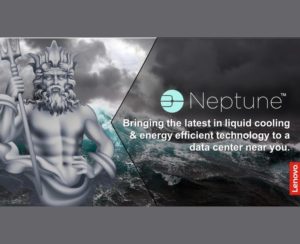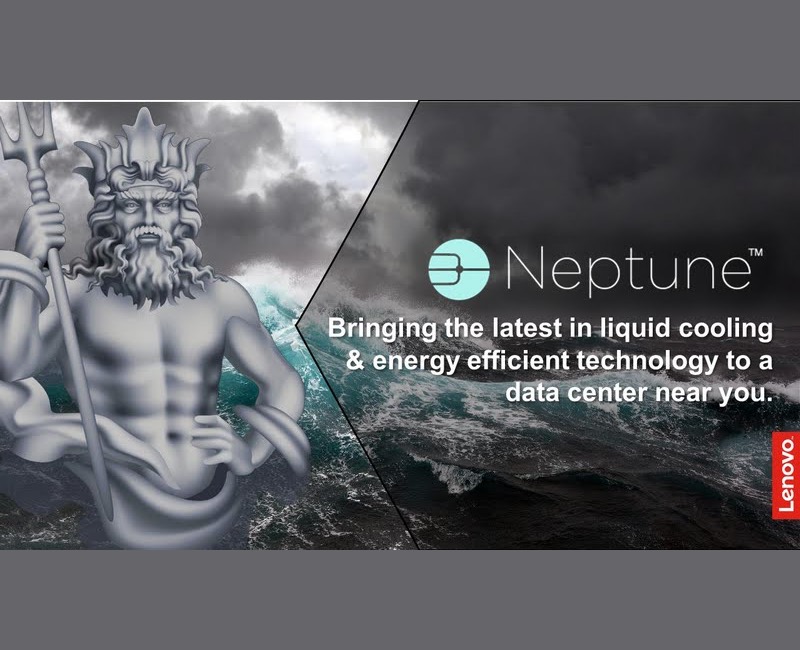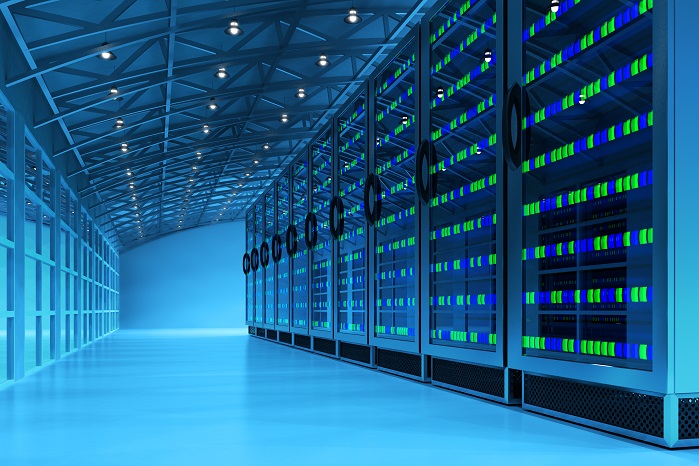 Today Lenovo released details about its pending “Neptune” liquid-cooling systems, which will enable data centers to run “up to 50 percent more efficiently, with uncompromising performance while maintaining a dense footprint.”
Today Lenovo released details about its pending “Neptune” liquid-cooling systems, which will enable data centers to run “up to 50 percent more efficiently, with uncompromising performance while maintaining a dense footprint.”
In Roman mythology, Neptune used his three-pronged trident to tame the sea. This inspired Lenovo’s liquid cooling “trident” of cooling technologies: Direct to Node (DTN) warm water cooling, rear door heat exchanger, and hybrid solutions that combine both air and liquid cooling. These advanced hardware innovations are underpinned with Lenovo’s Energy Aware Runtime (EAR) software which optimizes systems for energy efficiency and performance from the component level to the chassis. Lenovo systems with Neptune technologies deliver superior performance within a smaller energy envelope, using electricity more efficiently, to reduce ongoing OPEX. Neptune is not hardware or software, but an approach to using liquid and air cooling to extract heat from systems, freeing them to operate at higher performance levels.
Lenovo’s thermal engineers have been developing DTN liquid-cooled systems since 2012 – when, as IBM System x – the company installed the first water-cooled x86 cluster at Leibniz-Rechenzentrum (LRZ) in Munich, Germany. This groundbreaking installation allowed LRZ to reduce electrical consumption by up to 40 percent. Today, Lenovo’s ThinkSystem SD650 utilizes warm (50°C) water to cool the CPUs, PCIe and voltage regulators. Because the ThinkSystem SD650 servers are fan-less, and do not require water chillers, they operate at lower temperatures compared to standard air-cooled systems. That is because water conducts heat more efficiently than air. This means customers can run Xeon Scalable processors up to 240W+, where traditional air-cooled systems would be limited to 165W, thus delivering greater performance with 30-40 percent lower data center power consumption.
A RDHX is essentially a big radiator – just like in your car – attached to the rear door of the rack that absorbs the heat discharged from standard air-cooled systems. This process diminishes the hot air expelled into the “hot aisle,” reducing overall air conditioning costs and allowing slightly improved system performance.
Neptune uses Hybrid cooling, which will blend liquid and air cooling within the same system in the near future. Combined with our EAR software, which can dynamically throttle a CPU and memory as needed, Lenovo’s Neptune technologies deliver the flexibility to optimize the workload for either energy or performance. Currently, 87 of the “Green500” list of energy efficient supercomputers are Lenovo systems.
In order to understand how Neptune helps customers, new metrics need to be employed. Power Usage Efficiency (PUE), is a key measure of how much power in the data center is used for non-computing tasks, (total facility power ÷ total IT power), with an ideal score being 1.0. So, for example, air-cooled systems have a PUE of 1.5 to 2.0, whereas a RDHX solution would have a PUE of 1.2- 1.4. A DTN solution like the ThinkSystem SD650 has a PUE of less than 1.1. Hopefully soon, Neptune technologies will make PUE as important a specification as gigahertz or teraflops when choosing a server platform.
For data centers where electricity consumption has become an escalating, budget-draining problem, Neptune technologies offer relief. Similarly, those whose data center infrastructure was not built to support the increasing heat profile of air-cooled systems should look at Neptune. Finally, systems with processors that consume 200W and higher are forcing HPC cluster deployments to strongly consider Neptune-enabled liquid cooling to drive as much computational horsepower as possible.
As god the sea, Neptune would be proud that his namesake reduces environmental impact. Prioritizing sustainability isn’t a one-time action, but a long-term commitment, and the deployment of Neptune technologies is a proud step towards reducing a data center’s energy consumption.
Visit Lenovo at ISC 2018 booth #C1220 to see Neptune in action.




